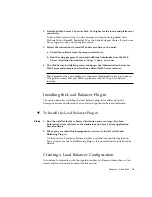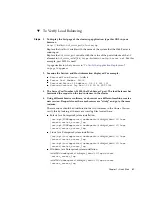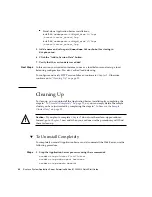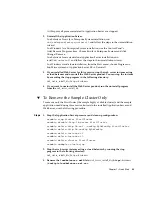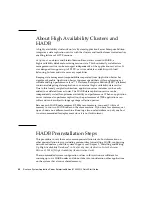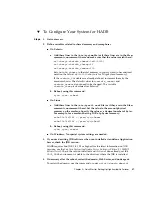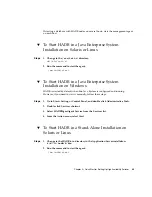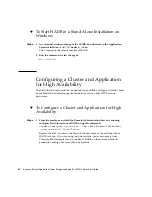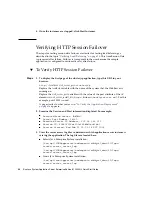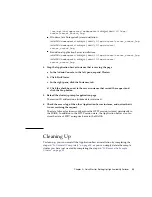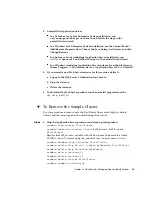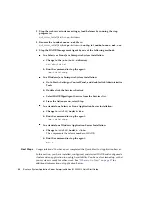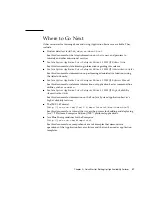
4. Once the instances are stopped, click Start Instances.
Verifying HTTP Session Failover
The steps for testing session data failover are similar for testing load balancing as
described in the topic
“Verifying Load Balancing” on page 20
. This time Session Data
is preserved after failure. Failover is transparent to the user because the sample
application is configured for automatic retry after failure.
▼
To Verify HTTP Session Failover
1. To display the first page of the clusterjsp application, type this URL in your
browser:
http://
localhost
:
web_server_port
/clusterjsp
Replace the
localhost
variable with the name of the system that the Web Server is
running on.
Replace the
web_server_port
variable with the value of the port attribute of the
LS
element in
web_server_install_dir
/https-
hostname
/config/server.xml
. For this
example, port 38000 is used.
A page similar to what you saw in
“To Verify the Application Deployment”
on page 16
appears.
2. Examine the Session and Host information displayed. For example:
■
Executed From Server:
localhost
■
Server Port Number: 38000
■
Executed Server IP Address: 192.18.145.133
■
Session ID: 41880f618e4593e14fb5d0ac434b1
■
Session Created: Wed Feb 23 15:23:18 PST 2005
3. View the server access log files to determine which application server instance is
serving the application. The log files are located here:
■
Solaris Java Enterprise System installation:
/var/opt/SUNWappserver/nodeagents/
nodeagent_name
/i1/logs/
access/server_access_log
/var/opt/SUNWappserver/nodeagents/
nodeagent_name
/i2/logs/
access/server_access_log
■
Linux Java Enterprise System installation:
/var/opt/sun/appserver/nodeagents/
nodeagent_name
/i1/logs/
access/server_access_log
Steps
32
Sun Java System Application Server Enterprise Edition 8.1 2005Q2 Quick Start Guide


